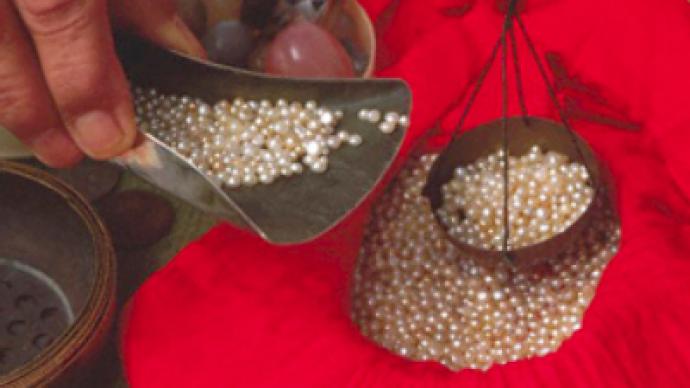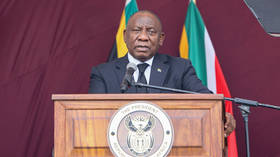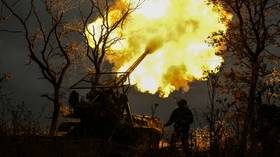Dubai eyes the jewel of the past to bring back the lustre of pearls

Dubai is known for its oil riches and spectacular architecture, but it craves a return to its old glory, and the origin of its prosperity as the major producer of natural pearls.
In the past, pearl divers could hold their breath for two minutes and dive into the warm waters of the Gulf for the aquatic gems. The lucrative trade was based on these “amphibious” men. Many died and many got rich. It was a time when a pearl was more expensive than gold – a time when the Gulf was the world's pearl trade epicenter with $4 million revenue a year at the start of the 20th century.
In the 1930s that industry was turned upside down overnight, leaving the country desperate, when cultured (technologically altered) pearls were introduced by the Japanese, meaning they were no longer rare. In the 1960s, the oil boom returned the Gulf people's interest to the sea, despite the value of natural pearls having fallen by 90%. But nowadays, while the pearl market is packed with cultured pearls from the Far East and West, natural pearls have returned to their throne, and an ambitious Dubai is attempting to revive the 3000-year-old pearl trade with an eye on the multibillion dollar natural and cultured pearl market.
“The pearl trade is good nowadays,” says Ahmed Nasser, the manager of Dubai's Al Fardan Jewellery, “in the 1950s-1960s the pearl value decreased because of the oil boom and cultured pearls, but nowadays the natural pearl price is growing since the market is full of cultured pearls and a natural pearl is a rare find.” The Al Fardan name has had a strong association with pearl trading in the Gulf for over a century, focusing on natural pearl trading.
Goma’a Bin Al-Thaleth is a director of the heritage projects in the Diving Village and a pearl diver-researcher, “Before, the whole trade in the Gulf was based on the pearls, but after 80 years it's gone from the United Arab Emirates and from the Arabian Gulf entirely.” Mr. Ibn Al-Thaleth says Dubai can revive the market, but wistfully adds it can never revive the heritage behind it, “The pearl trade is now only a heritage. They can get back the trade but they can not bring back those traditional pearl divers, old pearl dhows and old tools.”
The grandfathers of both Al-Fourdan and Bin Al-Thaleth were part of an age when the Gulf's wealth was enclosed in small oysters.
The current global pearl market runs on cultured saltwater and freshwater pearls. Two cultured pearl elephants – China and Japan – have battled each other since the first days of pearl-farming. Although Hong Kong is the present epicenter of pearl-processing, China leaped over Japan in becoming the world's largest producer of Akoya pearls, the most popular cultured pearl, with more than 1,500 metric tons per year. Present day natural pearling is confined mostly to seas off Bahrain, with Australia also retaining one of the world’s last pearl diving fleets based on its northern coast.
Reports from the Statistics Department of Dubai World indicate that the value of the loose pearl trade in Dubai grew 324% from $6 to over $26 million from 20-07 to 2008. A strategic initiative of the Dubai government, The Dubai Multi Commodities Center (DMCC), provides the market infrastructure and platform for the precious stones industry in Dubai. In recent years, the DMCC has increasingly focused on reviving the pearl industry in its former motherland. One of its mega projects, Pearls of Dubai, will include pearl farms and focus entirely on cultivating pearls. The project is due in 2010. Ras El-Khaima (95km from Dubai) has pearl farms like Al-Rams pearl farming, but beside that there are hardly any pearl farms found in the Emirates. In addition to its elite natural pearl trade, Dubai's government is looking to revive the old trade with pearl-culturing technology.
Goma’a Bin Al-Thaleth says that now it is nearly impossible to find a natural pearl in the Arabic Gulf because of pollution and oil drilling, “in my opinion the first and second Bahrain War had a significant negative impact on the oysters because of the oil discharges into the sea, the oysters stopped producing pearls, it is decreased by around 50% after the oil boom [in 1960s].” Bin Al-Thaleth adds that culturing pearls affected the historical reputation of the natural pearl, “it interferes with the heritage of this trade, and some countries like Bahrain attempted for a period of time to protect the rights of the natural pearl, prohibiting the trade of cultured pearls, but nowadays nobody really controls that.” Bahrain issued a legislative decree in 1991 that contained an article prohibiting cultured pearl trade with a one year jail penalty.
“The rarity of this trade dictates its nuances and price,” Mohamed Nasser says about the natural pearl trade in the UAE, which is made up of a network of experienced individuals connected together by word of mouth rather than by commercial platforms. The traders depend on their private pearl reservoirs from the bygone days, or import them from Bahrain, Kuwait, or the South Seas. “Now the pearl is not harvested anymore but rather circulated among around 10 pearl outlets (privately owned) in the Gulf,” asserts Mr. Nasser. “For instance in European cities you can count the outlets on your fingers.”
The scarcity of the natural pearl in the market catapults its price continuously, unlike cultured pearls, the price of which is decreasing. “The human element interfered in the process and now it is easy and cheap to have a cultured pearl if you want,” explains Mr. Nasser. Cultured pearl vendors in the malls tend to occasionally call them “practical pearls”.
The price difference is obvious in the market. While the price tag of a necklace of Australian saltwater cultured pearls, perfectly round with high luster, could reach more than a hundred thousand dollars, a similarly shaped and quality natural pearl necklace could be worth over a million. A customer can purchase a 3mm south sea cultured pearl necklace for $33.000 from Tanyaz jewelers or for $160.000 from Paspely Pearling Company. According to the grading system of pearl value (luster, shape, color, surface, and size) there is a variety in its price.
“We have a simple necklace for $2,700 to $4,000. However, a more complicated and high-quality piece could reach from $1.4 to $2 million,” says Mr. Nasser.
Mona Abouissa for RT














